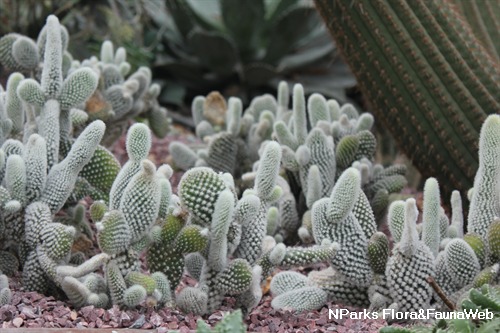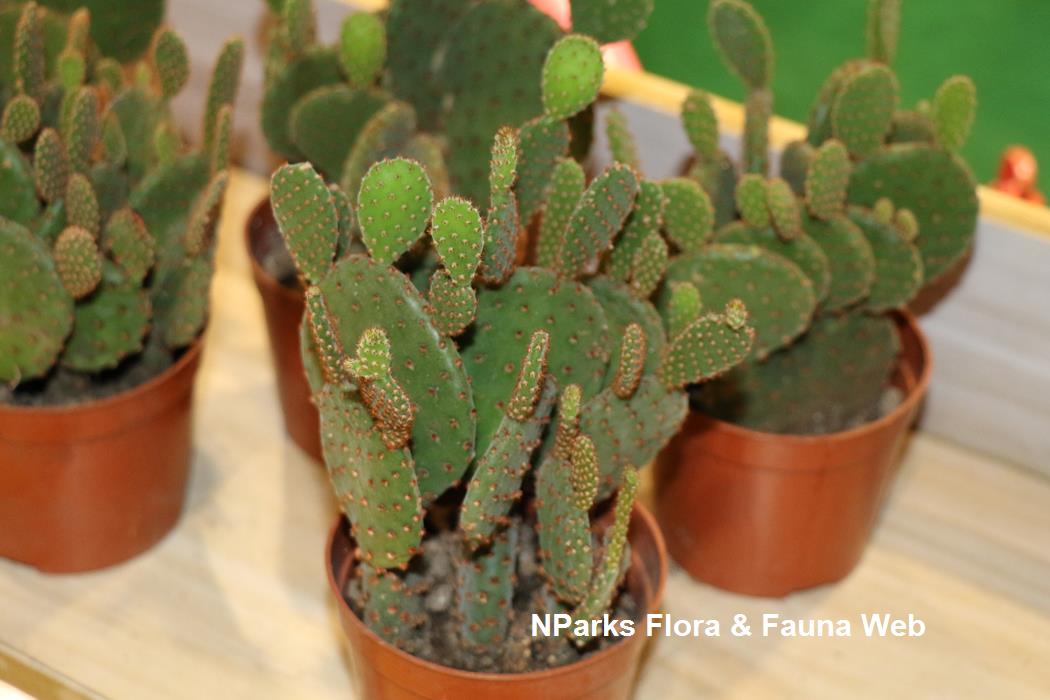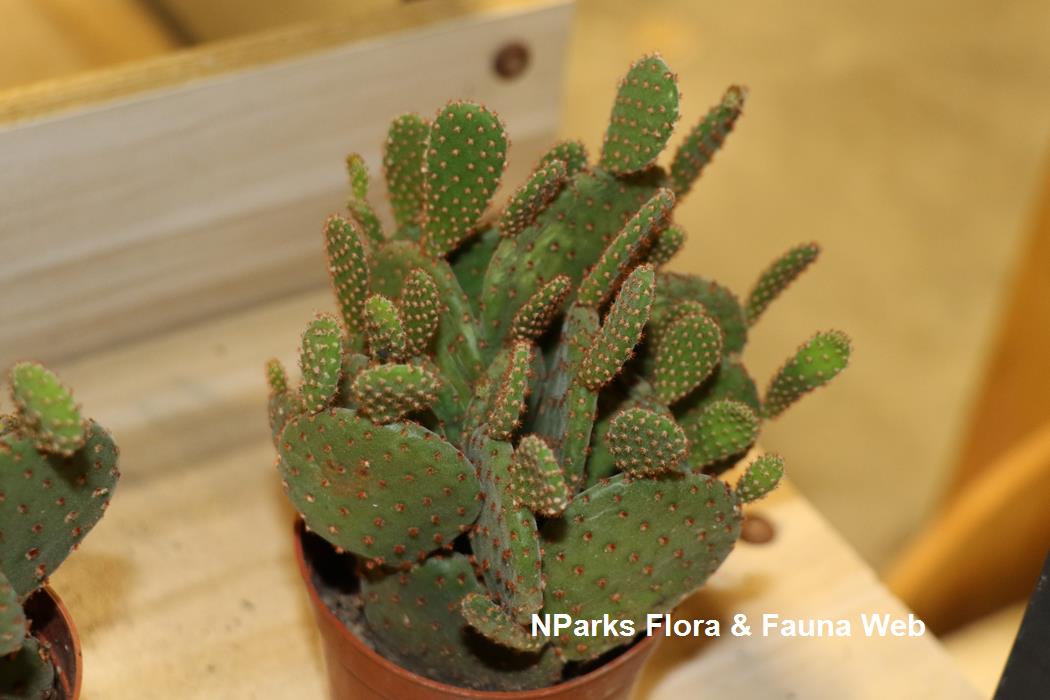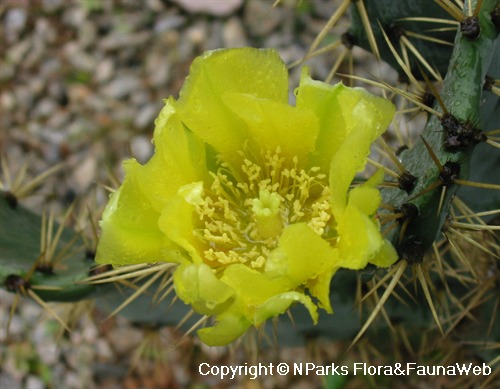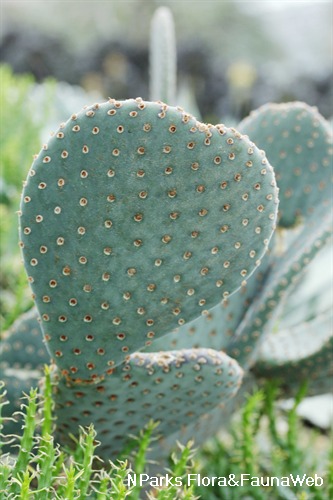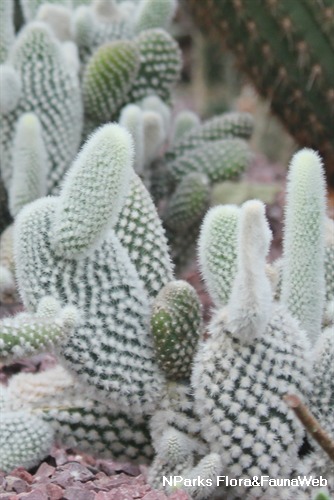
Name
Classifications and Characteristics
| Plant Division | Angiosperms (Flowering Seed Plants) (Dicotyledon) |
|---|---|
| Plant Growth Form | Succulent Plant |
| Lifespan (in Singapore) | Perennial |
| Mode of Nutrition | Autotrophic |
| Plant Shape | Irregular |
| Maximum Height | 40 cm to 60 cm |
| Maximum Plant Spread / Crown Width | 1.5 m |
Biogeography
| Native Distribution | Northern America |
|---|
Description and Ethnobotany
| Growth Form | Succulent which forms dense clusters of small pads. |
|---|---|
| Stems | Thick, flattened stems are oval and resemble leaves.They are densely covered in small clusters of white, needle-like glochids. New pads form near the stem tips forming the shape of bunny ears. |
| Flowers | Cream-coloured to light yellow flowers are cup-shaped and composed of about 6 oblanceolate petals with pointed, slightly frilly tips. Bisexual flowers contain cream-coloured stamens and a dark-tipped style. |
| Fruit | Red, fleshy fruits are round to egg-shaped (2-2.5 cm long, 1.2-1.6 cm wide). The surface is spineless, but covered in short, soft hairs (pubescent). |
| Taxonomy | This plant is often referred to as Opuntia microdasys albata or Opuntia microdasys 'Albata' in the horticultural trade. According to the Flora of North America, the species Opuntia microdasys may have either yellow or whitish glochids, so technically this plant should be called Opuntia microdasys. The name Opuntia microdasys albata does not follow standard nomenclatural rules, and to our knowledge, there is not sufficient evidence to use Albata as a cultivar name. |
| Cultivation | The needle-like glochids easily detach from the stem even at a very light touch. If the plant needs to be moved, spray it with water to prevent the glochids from becoming detached. Water thoroughly and then allow the soil to dry out completely before re-watering (as opposed to giving small amounts of water on a frequent basis). |
Landscaping Features
| Desirable Plant Features | Ornamental Stems, Ornamental Form |
|---|---|
| Landscape Uses | Container Planting |
| Thematic Landscaping | Rockery / Desert Garden |
| Usage Hazard - Cons | Spines/Thorns - Stem/Branch |
Plant Care and Propagation
| Light Preference | Full Sun, Semi-Shade |
|---|---|
| Water Preference | Little Water |
| Rootzone Tolerance | Drought Tolerant, Well-Drained Soils |
| Propagation Method | Stem Cutting (Herbaceous) |
Image Repository
Others
| Master ID | 31942 |
|---|---|
| Species ID | 6344 |
| Flora Disclaimer | The information in this website has been compiled from reliable sources, such as reference works on medicinal plants. It is not a substitute for medical advice or treatment and NParks does not purport to provide any medical advice. Readers should always consult his/her physician before using or consuming a plant for medicinal purposes. |

